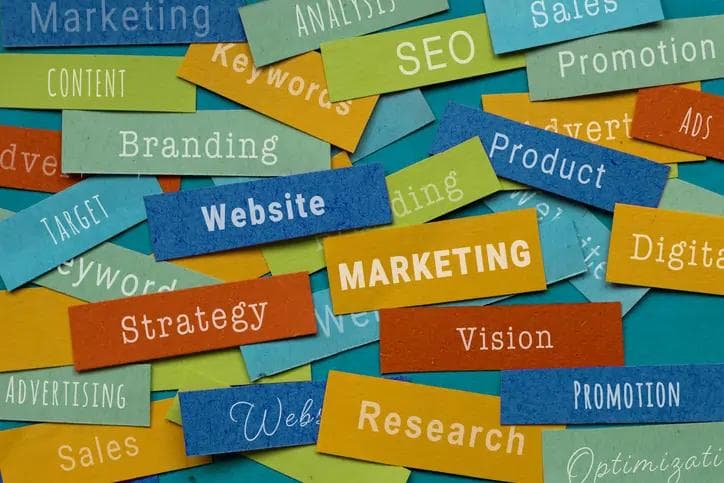Financing Your Business's Supply Chain: When and How to Spend Your Money
Financing Your Business's Supply Chain: When and How to Spend Your Money
Published by Jessica Weisman-Pitts
Posted on February 21, 2025

Published by Jessica Weisman-Pitts
Posted on February 21, 2025

When it comes to running a business, there are few details as important as getting your supply chain right—from costs, to efficiency, relationships, and product quality, there’s a lot to consider, and a lot that can go wrong.
One detail that is as important, though, is your budget. Everyone’s got them, and everyone needs to stick to them.
Supply chain and budgeting go hand in hand. On one hand, you don’t want to overspend and send yourself bust, and on the other, you don’t want to underspend and cost yourself more in the long run.
So, how do you get it right? Well it’s largely about figuring out your needs as a business, and there is no one-size-fits-all solution, but there are some important factors to consider in figuring it all out for yourself.
What Are Your Values As A Business?
This is a big one, and hugely dependent on your business.
For example, if you’re a business selling eco-friendly cleaning products, you’d better ensure your shipping materials reflect this. An environmentally conscious customer isn’t going to be very impressed if your product comes unnecessarily wrapped in single-use plastic. Opting for compostable parcels might cost more, but ensures that you stick to your values—for the sake of your own satisfaction and fulfillment, as well as your reputation with customers, particularly those who shop with you because they share the same values.
Similarly, if you are an organisation championing women in business, it’d be important that you shop from, and use the services of, women-owned and run businesses. This is an example of where budget might not be the number one priority—how much you spend will be more dependent on putting your money where your mouth is.
How Quickly Do You Need Things To Happen?
If you’re qualified with a Masters in Supply Chain Management online, you know that time is money (click here to learn more).
How quickly do you need to get from raw materials to finished products in the hands of consumers? If you’re on a strict deadline, you’ll need to move fast, and that might cost you.
Moving fast might mean going with a local supplier or manufacturer, which could be more expensive than international options. It might mean paying for express services or express shipping, which often come at a premium. This doesn’t have to be a problem; it just requires some planning. If you know you need to pay for faster production times, you might need to tighten the belt in another area, or cut something from your initial plans. For example, if you’re launching your business with a range of five products, you might decide to put one on hold to ensure the rest can be made in time, and to the standard that you need.
If, however, you don’t need to rush things, then look into cheaper options that might take a little longer—if quick turnaround times aren’t a priority, let them take a backseat so that other things that are can be prioritised.
Quality of Product
Now, you might be thinking to yourself “I’m only going to sell the best quality product”, and if that’s the case—amazing, but you might still need to consider each individual aspect of the final—quality—product.
Maybe you’re selling clothes. You want the clothes to be top quality—well-made from only the best materials. That makes sense. But your supply chain, and what you provide to customers, comes down to much more than just the product you sell. It’s the packaging it comes in, the thank you card that accompanies it, it’s so many little details, and you have to consider, plan for, and budget for, every single one of them.
Maybe you can skimp a little on the quality of the card you print on; let’s be honest, it’s probably going to end up in the bin. If you’re a stickler for good paper, that’s okay, but think about where else you might be able to opt for a slightly lower quality alternative. This doesn’t have to mean providing your customer with a lower quality version of the product they purchase from you, it might just mean making decisions about other factors that don’t matter to them.
It’s also important to acknowledge that not every business sets out to make the best quality product on the market. Sometimes it’s about being cost-effective, or fast to deliver. If that’s the case for your business, really weigh up your options when it comes to quality of raw materials and other parts of the final product. Your target customer might not care as much that their clothes are double lined, they might just want them to be affordable and easy to purchase.
Risk Mitigation
As we mentioned earlier, the last thing you want to do is take shortcuts with the intention of saving money, only to cost yourself in the long run.
Picture this: you’ve found a seemingly fantastic deal online; a cheaper manufacturer that charges half of what the alternatives do. They don’t have many reviews but they respond to you quickly and seem confident they can get the job done, so you decide to go with them. A few weeks go by and you can’t get ahold of them, another few and you find out they’ve gone under. You’ve lost the money you paid them and you’re back at square one.
The lesson? Don’t take risks that could cost you significantly if they don’t pay off. Risk taking should be reserved for small details with low potential to go wrong—not investments that could send you broke.
There truly is no one universal answer to questions of when and how to spend money within your supply chain—but that doesn’t mean there’s no answer at all. Based on the factors above, you should be able to deduce where to save, and where to spend when it comes to your supply chain. Every factor affects the others, so look at things both individually and as a whole. It might seem like a lot of work, but it will pay off. A little planning goes a long way in business, and you’ll thank yourself later.
Explore more articles in the Business category











